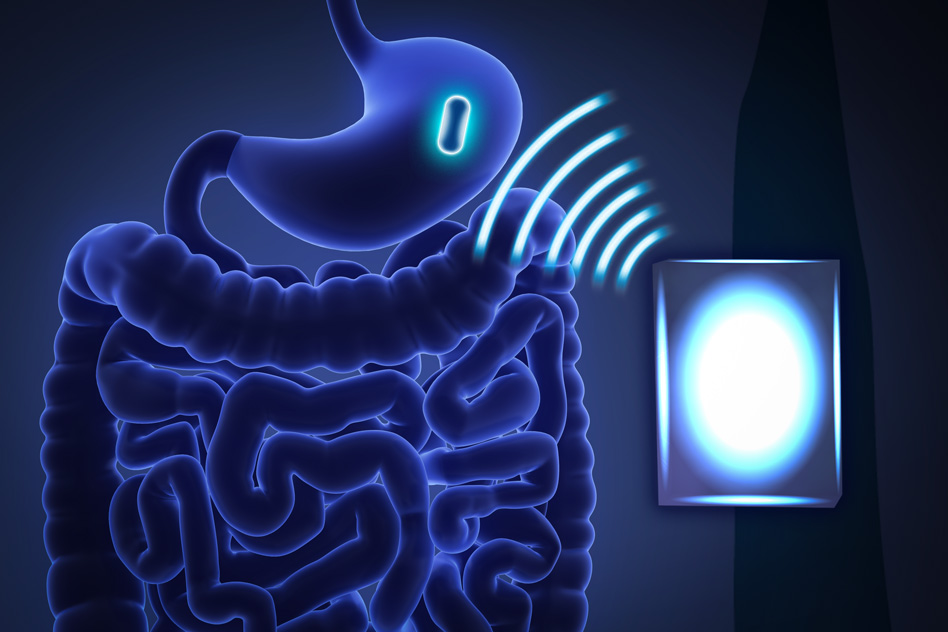
“Right now we have no way of measuring things like core body temperature or concentration of micronutrients over an extended period of time, and with these devices you could start to do that kind of thing,” says Abubakar Abid, a former MIT graduate student. Image: MIT News. Battery image courtesy of Ella Maru Studio / Giovanni Traverso / Abubakar Abid
A team of researchers created a novel wireless power source that could potentially produce the next-generation of ingestible health devices.
Engineers from the Massachusetts Institute of Technology (MIT), Charles Stark Draper Laboratory, and Brigham and Women’s Hospital made a battery cell that can safely power machines that could either monitor conditions in the gastrointestinal tract or releases small reservoirs of drugs over a certain period of time.
The battery works through a process called midfield transmission, which is a technique that enables power transfer across longer distances with the help of an antenna.
The team sought to test this power source’s efficacy on a group of pigs by giving the animals one of the medical prototypes they have made.
“Right now we have no way of measuring things like core body temperature or concentration of micronutrients over an extended period of time, and with these devices you could start to do that kind of thing,” said a former MIT graduate student and first author of this study Abubakar Abid, said in a statement.
An external antenna was able to safely deliver 100 to 200 microwatts of power from distances ranging between 2 to 10 centimeters to an internal antenna built into the device moving through the digestive tract. No electrodes were needed.
“We’re able to efficiently send power from the transmitter antennas outside the body to antennas inside the body, and do it in a way that minimizes the radiation being absorbed by the tissue itself,” said Abid.
Ultimately, this technique produces enough energy to power sensors for monitoring heart rates and temperatures.
“This work, combined with exciting advancements in subthreshold electronics, low-power systems-on-a-chip, and novel packaging miniaturization, can enable many sensing, monitoring, and even stimulation or actuation applications,” said co-author and Draper Laboratory researcher Brian Smith, in the announcement.
However, the team acknowledged they need to continue examining this system’s capabilities before transitioning into human trials.
These findings were described in the journal Scientific Reports.



